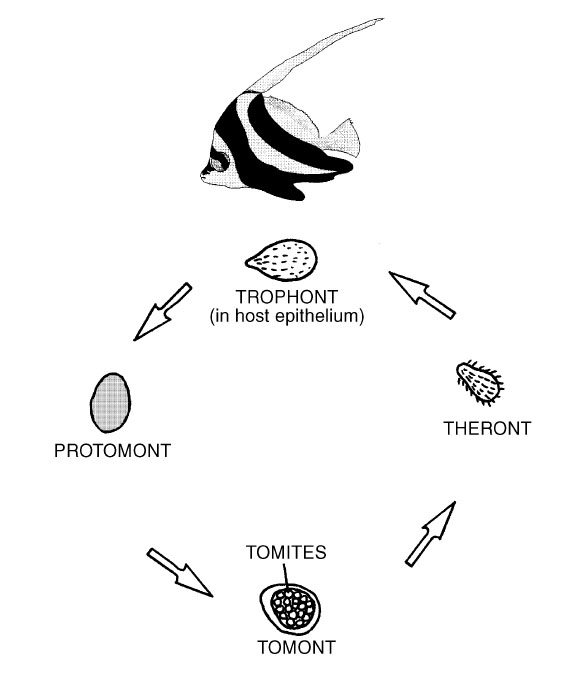 |
 |
Have we entered the era of the 1 year sequencer release cycle? *Updated*
Tuesday, January 13, 2015
Illumina's $1000 Genome*
Wednesday, January 15, 2014
A coming of age for PacBio and long read sequencing? #AGBT13
Saturday, February 23, 2013
Next Generation Sequencing rapidly moves from the bench to the bedside #AGBT13
Friday, February 22, 2013
#AGBT day one talks and observations: WES/WGS, kissing snails, Poo bacteria sequencing
Wednesday, February 20, 2013
Got fetal DNA on the brain?
Friday, September 28, 2012
Memes about 'junk DNA' miss the mark on paradigm shifting science
Friday, September 7, 2012
So, you've dropped a cryovial or lost a sample box in your liquid nitrogen container...now what?
Thursday, August 16, 2012
A peril of "Open" science: Premature reporting on the death of #ArsenicLife
Thursday, February 2, 2012
Antineoplastons? You gotta be kidding me!
Thursday, October 27, 2011
YouTube: Just a (PhD) Dream
Thursday, October 27, 2011
Slides - From the Bench to the Blogosphere: Why every lab should be writing a science blog
Wednesday, October 19, 2011
Fact Checking AARP: Why soundbytes about shrimp on treadmills and pickle technology are misleading
Monday, October 17, 2011
MHV68: Mouse herpes, not mouth herpes, but just as important
Monday, October 17, 2011
@DonorsChoose update: Pictures of the materials we bought being used!!
Friday, October 14, 2011
Is this supposed to be a feature, @NPGnews ?
Tuesday, October 4, 2011
A dose of batshit crazy: Bachmann would drill in the everglades if elected president
Monday, August 29, 2011
A true day in lab
Wednesday, August 10, 2011
A day in the lab...
Monday, August 8, 2011
University of Iowa holds Science Writing Symposium
Tuesday, April 26, 2011
Sonication success??
Monday, April 18, 2011
Circle of life
Thursday, March 17, 2011
Curing a plague: Cryptocaryon irritans
Wednesday, March 9, 2011
Video: First new fish in 6 months!!
Wednesday, March 2, 2011
The first step is the most important
Thursday, December 30, 2010
Have we really found a stem cell cure for HIV?
Wednesday, December 15, 2010
This paper saved my graduate career
Tuesday, December 14, 2010
Valium or Sex: How do you like your science promotion
Tuesday, November 23, 2010
A wedding pic.
Tuesday, November 16, 2010
To rule by terror
Tuesday, November 9, 2010
Summary Feed: What I would be doing if I wasn't doing science
Wednesday, October 6, 2010
"You have more Hobbies than anyone I know"
Tuesday, October 5, 2010
Hiccupping Hubris
Wednesday, September 22, 2010
A death in the family :(
Monday, September 20, 2010
The new lab fish!
Friday, September 10, 2010
What I wish I knew...Before applying to graduate school
Tuesday, September 7, 2010
Stopping viruses by targeting human proteins
Tuesday, September 7, 2010
 |
 |
 |
 |
Brian Krueger, PhD
Columbia University Medical Center
New York NY USA
Brian Krueger is the owner, creator and coder of LabSpaces by night and Next Generation Sequencer by day. He is currently the Director of Genomic Analysis and Technical Operations for the Institute for Genomic Medicine at Columbia University Medical Center. In his blog you will find articles about technology, molecular biology, and editorial comments on the current state of science on the internet.
My posts are presented as opinion and commentary and do not represent the views of LabSpaces Productions, LLC, my employer, or my educational institution.
Please wait while my tweets load 
 |
 |
youtube sequencing genetics technology conference wedding pictures not science contest science promotion outreach internet cheerleaders rock stars lab science tips and tricks chip-seq science politics herpesviruses
 |
 |
 |
 |
How AAAS and Science magazine really feel about sexual harassment cases in science
Every once in a while I find myself having a "grass is greener" moment in science. I sit at the computer thinking about all of the annoying things in lab that aren't working and wonder, "If I could answer any question, given unlimited resources, what would I choose to study?" This, my friends, is where I prove my unhealthy obsession with fish.

Credit: Colorni and Burgess, 1993
If money, fame, and science groupies weren't a priority, I'd spend my time and resources trying to find a cure for Cryptocaryon irritans, which is better known in the tropical fish industry as white spot disease, Ich, or Crypto. Crypto is a nasty little bug. It's a protozoan ectoparasite that lodges itself in the epidermis of fish where it grows until it drops off to mature into an Aliens inspired cyst that spits out 300 new little bastard parasites that go on to infect more host fish. In the open ocean, this guy isn't so terrible because its chances of infecting a host are minimal considering the massive amount of water a parasite has to travel through to find a new host. This is a completely different story at an aquaculture facility or in the home aquarium where fish are typically stocked to capacity in relatively small volumes of water. A single cyst can quickly turn into a fish killing epidemic.

Trophont in fish epidermis Credit: Colorni and Burgess, 1993
The life cycle of crypto is simple. It has 4 stages. The on fish stage is called the "Trophont." This stage lasts anywhere from 3-7 days with the height of observable parasitic whitespots being day 4. During this stage, the parasite fattens up on fish cells and other yummies found in the epithelium to prepare for the expansion stage of the life cycle. Once the trophont has matured, it falls off of the fish and at this stage is called a "Protomont." The protomont floats around until it bumps into something that it can stick itself to. Usually this is a rock or a piece of sand. There's evidence that the Protomonts have a hard time sticking to glass and plastic, so many experts recommend treating fish for this disease in a bare bottom aquarium decorated with PVC pipes. Once the protomont finds a nice place to rest, it secretes some goo that allows it to be stuck in place. At this point the parasite is considered a tomont and encysts (covers itself with a hard candy shell). Over the next 3 - 60 days, the cyst matures with approximately 300 tomites growing inside. These parasitic particles then eat their way out of the cyst and become "Theronts" which actively hunt down fish hosts using their cilia to propel them through the water. These things are creepy looking by any standard, and I'm super happy they can't infect humans. When the theront finds a host, the life cycle starts over again resulting in the rapid exponential production of more nasty parasites.

Theront Credit: Colorni and Burgess, 1993
The problem with Crypto is that its really only vulnerable to treatment at two of the 4 stages. The Trophont has been said to be susceptible to Quinone during the the period when its lodged in the fish epithelium and the Theront (the swimming creeper) is highly sensitive to copper, low salt, and formalin. The problem with all of these treatments is that many of them are toxic to the fish and highly toxic to invertebrates (corals, snails, crabs, shrimp etc). So the only real way to treat for the disease in a home aquarium is to remove the fish from the tank and treat them for 8 weeks, while leaving the main aquarium containing the invertebrates free of fish for the same amount of time. This is because the cysts can take up to 60 days to mature and hatch out their Theronts. Without a fish host, the Theronts die within 48 hours and can't complete the life cycle.
Finding a specific inhibitor of infection that does not require the removal of fish from a system or the treatment of them with heavy metals or carcinogens would be ideal. There have been a few recent studies looking at alternative cures for Crypto. One of these includes a vaccine which was tested by injecting grouper with formaldhye killed Theronts. It was found that only injection with a large amount of killed theronts resulted in protective immunity, while injection with killed tomonts and trophonts offered little protection (Bai et al 2007). Another study looked at the susceptibility of 8 saltwater fish to the parasite and found that one fish in particular, the rabbitfish (Siganus oramin) was resistant to infection and a specific antiparasitic protein was isolated from the fish's serum and found to have a strong parasite killing effect when administered to Theronts growing in a test tube (Wang et al 2010). Maybe one day we will be able to vaccinate new fish against the parasite or cover them in a protective protein infused slimecoat.
However, neither of these developments seems practical for a home aquarium user. It'd be much better if we could find a specific small molecule inhibitor of the parasite that could be fed to the fish during an outbreak without affecting the rest of the aquarium ecosystem. In vitro culturing techniques for the parasite have been developed and it seems likely that a plate assay could be created using recently hatched theronts. I imagine theront viability could be determined using a flourescence assay to detect the viability of the parasites making the entire screening process speedy and high throughput. The candidate drugs could then be used to screen for toxicity in both fish and invertebrates. Of course this simplistic description of drug development isn't exactly a proposal, but anything is possible given unlimited time and resources.
###
References:
Angelo Colorni and Peter Burgess. 1993. Cryptocaryon irritans Brown 1951, the cause of ‘white spot disease’ in marine fish: an update. Aquarium Sciences and Conservation Volume 1, Number 4, 217-238, DOI: 10.1023/A:1018360323287.
Jian-Shan Bai, Ming-Quan Xie, Xing-Quan Zhu, Xue-Ming Dan and An-Xing Li. 2007. Comparative studies on the immunogenicity of theronts, tomonts and trophonts of Cryptocaryon irritans in grouper. Parasitology Research Volume 102, Number 2, 307-313, DOI: 10.1007/s00436-007-0766-6
Wang FH, Xie MQ, Li AX. 2010. A novel protein isolated from the serum of rabbitfish (Siganus oramin) is lethal to Cryptocaryon irritans. Fish Shellfish Immunol. 2010 Jul;29(1):32-41. Epub 2010 Feb 1.
This post has been viewed: 5814 time(s)
 |
 |
Too bad you couldn't coat things in the tank with some sort of polymer that resisted adherence of protomonts.
It's also things like this that actively dissuade me from keeping a fish tank. Too much work for me as a hobby. You really need to love it, and want to keep up with it. I don't have that sort of patience.
Once you get past the annoying parasite phase of stocking a tank, it's usually smooth sailing. I say this though and I'm still not done stocking the tank 1 year in.
This is a great goal. Maybe you should consider a side project in this area? The market for home aquariums is, I don't know, maybe in the billions? A cure for that could be very lucrative.
We've had that problem many times with our fish. It sucks.
I actually like the vaccine idea. How cool would it be if a fish store took the time to vaccinate all of its stock before selling it?? Screening a natural product library would be a lot of fun, but I think the cost of that process might be prohibitive, and the resulting drug could possibly be too expensive to produce and market to hobbyists.
One interesting thing I didn't mention in the text from the Bai study is that they found a single predominant 35kD protein in the membrane fraction of the theronts. They used it as an antigen to develop an antibody but didn't try immunizing the fish with that specific protein fraction. Unfortunately, Crypto hasn't been sequenced so it might be a huge pain in the ass to clone that gene to make a recombinant antigen in E. coli. Might be fun though!
I also stumbled on a paper that lists primers for detecting Crypto infection in water samples. I'm half tempted to test the water of the local fish shops :P
You could apply for an SBIR grant to get the funds to do the sequencing and make some antibodies. They usually are small but my understanding is that if you show progress you can get a renewal for much more money.
There are probably companies that do research in this area too, such as http://www.aquabounty.com/
Just food for thought.
Don't tempt me. I already have enough side projects to worry about. Haha, I did forward this post to the fish pathologist here at Florida though. He has a massive aquatics lab.
Guest Comment
I had a fully stocked tanks wiped out by ich several times. Very frustrating. I found that the key to keeping my fish alive and healthy was not stocking it with too many fish. When I bought the tank they told me that 1inch of fish per gallon of water was adequate. However, 30 small fish is waaay too many. Based on your explanation, I'm guessing that the reason this worked for me is that the Theronts were not able to find a fish in such a sparsely populated tank in under 48hrs.
I love fully a stocked tank, but a sparsely stocked tank with some nice plastic decorations sure beat the heck out decomposed danios! Let me know if you start an Ich vaccination study. I'll gladly give consent for my fish to enroll in phase I!
 |
 |
 |
 |











Jaeson, that's not true at most places. Top tier, sure, but 1100+ should get you past the first filter of most PhD programs in the sciences. . . .Read More
All I can say is that GRE's really do matter at the University of California....I had amazing grades, as well as a Master's degree with stellar grades, government scholarships, publication, confere. . .Read More
Hi Brian, I am certainly interested in both continuity and accuracy of PacBio sequencing. However, I no longer fear the 15% error rate like I first did, because we have more-or-less worked . . .Read More
Great stuff Jeremy! You bring up good points about gaps and bioinformatics. Despite the advances in technology, there is a lot of extra work that goes into assembling a de novo genome on the ba. . .Read More
Brian,I don't know why shatz doesn't appear to be concerned about the accuracy of Pacbio for plant applications. You would have to ask him. We operate in different spaces- shatz is concerned a. . .Read More